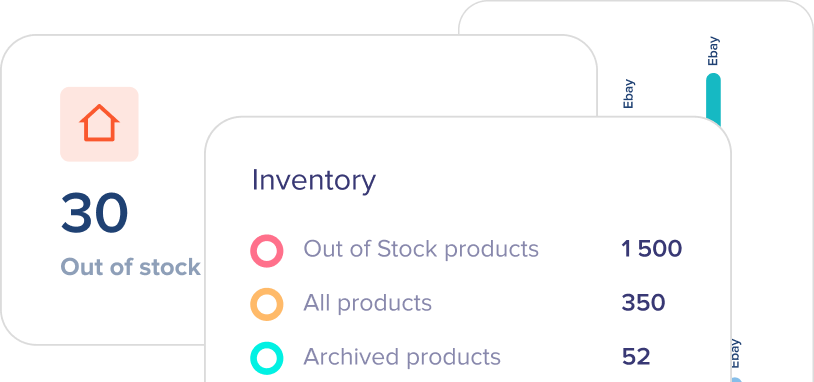Inventory is a crucial asset for businesses operating in retail and wholesale industries. The whole business operating processes rotate around properly managing the inventory by reducing costs yet ensuring stock availability and quality. If not managed effectively, this crucial asset of the business may turn into a liability.

Importance of inventory management
Why is inventory management critical? The general answer would be that inventory management is crucial for optimizing merchandising practices of a business. The absence of proper inventory management practices can cause numerous issues and breakdowns in business operations, resulting in cash outflow or, And other unfavorable scenarios. Following is the list of possible problems that might arise by the lack or misapplication of inventory management procedures.
Broken business-customer relationships
Customers do not want to put in extra effort to ensure that their orders are being processed correctly. Proper timely shipping and delivery are key points to ensure high customer satisfaction. Complications in these processes may result in a decrease in customer satisfaction, and therefore – loyalty.
Wasted human resources and extra costs
Even though we live in the era of high technologies that aim to ease work processes through automation, many companies are still using human resources to record inventory by pen and paper instead of using bar scanning and other digitized methods. In most scenarios, this would be ineffective and cost extra time and resources.
Untracked inventory balance
Two issues may arise if a business does not track its inventory balances. The latter is highly possible if the inventory volumes turn out to be more than required, which would cause extra handling costs. The opposite is also possible. The business may lose clients if it does not have enough stock and cannot meet the demands.
These are just some of the possible problems that businesses may face in case they lack up-to-date inventory management practices.
Essential inventory management practices
Inventory characteristics may widely differ based on industries. So, businesses should implement industry-specific inventory management models. However, there are general practices that solve common issues among all sectors.
Accurate forecasting
Accurately forecasted demand volumes are the central question that any retail and wholesale business should answer. To avoid possible uncertainties, companies must analyze the volumes of each inventory type that the customers may demand.
As discussed above, insufficient inventory levels may cause customer and opportunity losses, and more than required inventory volumes may bring high handling and many opportunity costs.
The primary source for accurate forecasts is sales reports. Luckily, we are in the era when intelligent technologies analyze and report data, turning decision-making into a well-grounded process. For example, one can easily access detailed sales reports broken down by sales channels, brand categories, price groups, order statuses, etc., via eSwap. Having all data in a spreadsheet, business owners or sales representatives can prepare reasoned demand projections.
Businesses can face demand alterations. For those cases, contingency plans might be necessary, depending on the industry. Other than that, ongoing sales, industry, customer, and environment analysis should be conducted to ensure that the demand forecasting is as accurate as possible.
Businesses should conduct real-time inventory tracking by using inventory management software to ensure that sales and purchases are recorded immediately. It would enable the company to have a clear, up-to-date image of the inventory turnover, which would allow the business to react to supply chain demands on time.
This is another tool to control over or under ordering inventory volumes through timely monitoring of supply and demand trends. Compared to periodic inventory tracking, real-time tracking would enable a better estimate of possible stockouts that could have caused customer losses. Another benefit of real-time inventory tracking is that it reduces the required frequency of inventory counts.
Real-time inventory order management can be carried out with eSwap software through timely and omnichannel online and offline order synchronization. Order management processes become easier managed and fulfilled by having all channels combined in one platform.
Inventory categorization
Categorizing inventory is a necessary step for inventory management of businesses that have different types of inventory. Values and selling patterns differ among stock types making some of them more critical than others. By grouping inventory into categories, supply chain managers can better understand inventory activities and thus, utilize resources and improve productivity.
An example of an inventory categorization tool is ABC analysis. The idea of it is to hierarchically separate inventory into three groups (A, B, C) from most to least valuable types. Group A would include items of the highest value. This group is prioritized the most. Group B items are of medium importance and value. Although it usually consists of the most significant inventory, Group C items are of least business importance.
By organizing stock by value and selling patterns, companies can better utilize warehouse spaces and streamline purchase fulfillment.
Automated data entry and management
The chances that a large retail or wholesale company can effectively operate with manual inventory data recording is around zero. Manual entries of data mean wasted resources on more than a necessary number of headcount, increased risk of human error, accuracy issues, etc. Companies can reduce costs, increase revenue and productivity and improve business processes by implementing automated data entry systems.
As discussed above, with the deployment of inventory management software, inventory control becomes easily accessible, time-appropriate, and more accurate and effective.
Conclusion
Improvements in inventory control practices are necessary for effective supply chain management to reduce unnecessary costs and wasted resources. Through automated inventory management tools and software data entries, properly categorized inventory, real-time inventory tracking, and accurately calculated forecasts, businesses can ensure improved controls and increased revenues.
Overall, effective inventory management results in win-win-win cases for businesses, employees, and customers.








